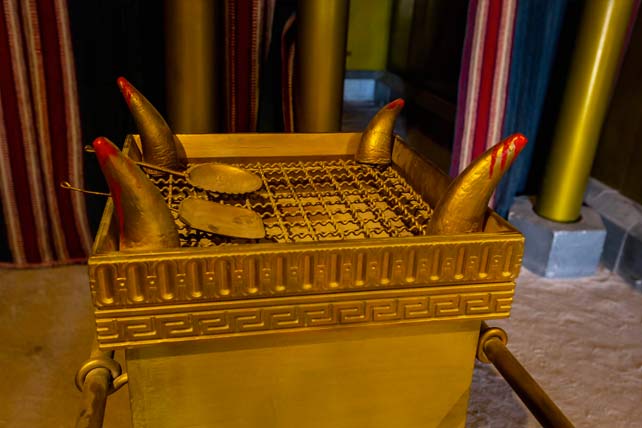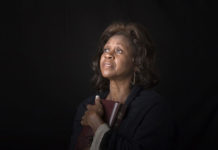
Even though English is my first language, I sometimes find it inadequate. I catch myself plugging in words and phrases from my other language—words that nail just what I want to say. Especially about the Tabernacle.
The Apostle John did the same thing. In his gospel, John wrote in Greek but used a word he borrowed from the Hebrew language. When he proclaimed that Jesus dwelt among us, he said that Jesus “tabernacled” among us (John 1:14).
Why would John use the word tabernacle? What is so important about the Old Testament tabernacle, and why should we as New Testament believers understand its role and purpose?
I recently toured a life-size replica of the tabernacle in the wilderness of southern Israel. Here is what I learned.

The Tabernacle
The tabernacle was a movable tent and courtyard built to God’s specifications with items used for the sacrificial work of the priests. God wanted to dwell among his people, but there was a problem. The issue was the people’s rebellion and sin, which caused them to miss the mark of God’s holiness, and this separated them from God and brought on condemnation.
God’s holiness sets him apart from everything else. Within the tabernacle, God revealed his presence in a room inside another room that was closed off from everyone else—all because of the problem of sin.
When God banished Adam and Eve from the Garden of Eden, he cast them out of his presence and stationed cherubim on guard (Gen 3:24). With the ordering of the tabernacle, God cracked open the door for a relationship with his people through a system of sacrifice.
Here are the main items inside the tabernacle and their appointed purpose.
Altar of Burnt Offerings
The altar of burnt offerings was stationed inside the tabernacle courtyard. God himself sent heavenly fire that continually burned on the altar (Lev. 9:23–24; 6:12). No manmade fire was allowed for sacrifice.

A guilty person brought an animal for a sin sacrifice to the tabernacle. After the animal was killed near the gate, the priest brought its blood and fat to the altar. He burned the fat on the altar and poured the blood on the golden horns and around the altar (Lev. 4).
A guilty person brought an animal for a sin sacrifice to the tabernacle. After the animal was killed near the gate, the priest brought its blood and fat to the altar. He burned the fat on the altar and poured the blood on the golden horns and around the altar (Lev. 4).

At the tabernacle, blood was not a side effect—it was the whole point. Only blood could provide atonement. God says in Leviticus 17, “For the life of a creature is in the blood, and I have appointed it to you to make atonement on the altar for your lives, since it is the lifeblood that makes atonement” (HCSB). The Hebrew word for atonement literally means “to cover.” God appointed the blood to cover our souls.












